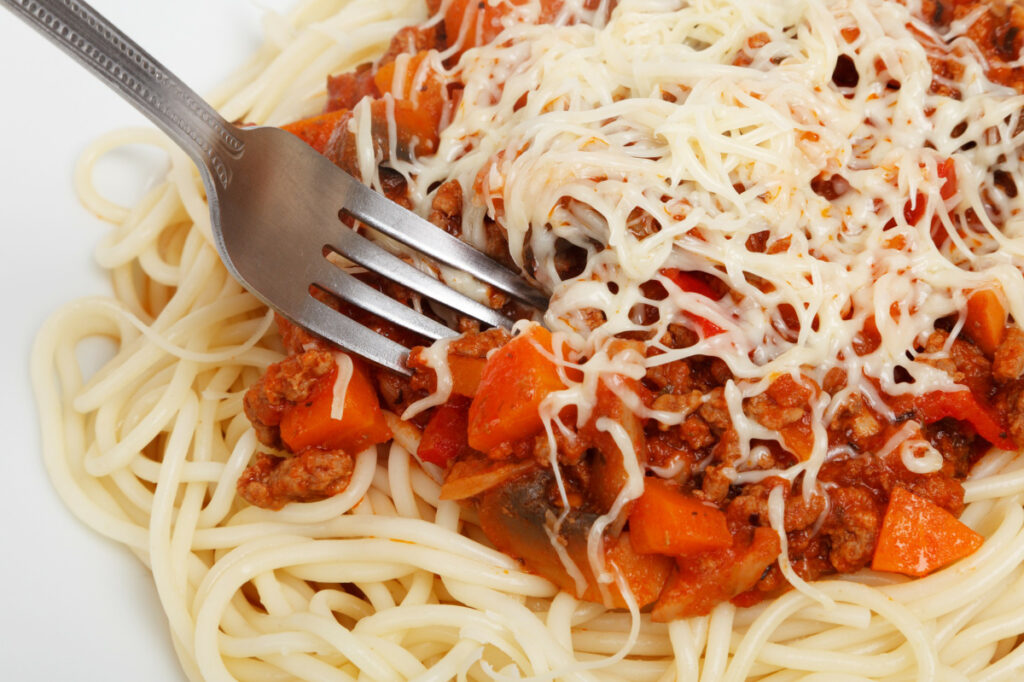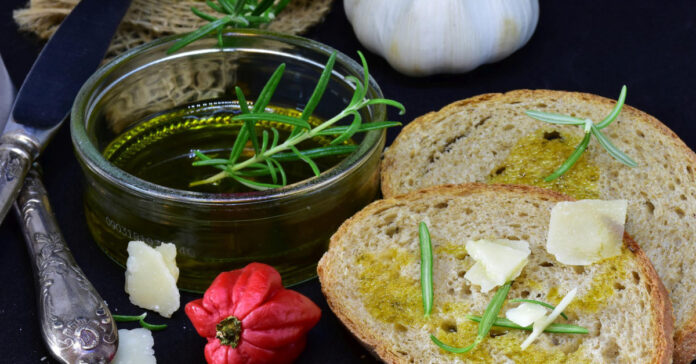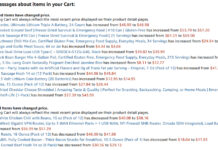As you evaluate your preps in light of the coming food crisis, consider the list of foods below. This list differs from our normal prepper list because we intend to consume these items within the next two years, possibly even sooner. That allows the addition items liked baked goods that have a shelf life measured in months rather than decades. Just be hyperaware of the best by date recommendations if you stock items that may go stale or turn rancid.
Virgin Cooking Oils
There is a shortage of cooking oils thanks to the war in Ukraine. While sunflower seed oil is the main oil in low supply, the shortage will spill over into other cooking oils. This could make obtaining oils difficult in the future. Cooking oils have a shelf life of about 2 years, so they are not on many long-term prepper planning lists. Because this crisis looks to be just around the corner, it’s time to add them to your prepper pantry.
When buying cooking oils, virgin oils that are made without chemicals and are not bleached or deodorized are our top choices. Store them in a dark glass container or a metal tin to help preserve shelf life. Warm temperatures and light will contribute to the oil turning rancid, so keep them in the proverbial cool dark place.
Our favorite oil for our prepper pantry is virgin coconut oil. Our second go-to oil is virgin or extra-virgin olive oil, which is our primary oil for every day use. My wife also like avocado oil, just be sure to get the cold-pressed variety.
Grains
I went into some detail three days ago in this article on how to store grains and recommended that you make storing wheat (if you have a grain mill) and rice your priorities, followed by oats, corn and other grains. Today, I’m going to address products made with grains rather than the grain itself.
Baking Mixes
Pancake mix is a good option for your prepper pantry because it is inexpensive, easy to prepare in just one pan, and most everyone likes pancakes. If you get the complete mixes, all you have to do is add water. There is a wide variety of pancake mixes out there, including non-gluten and high protein, but shop while you still can find them. As we discussed yesterday, there may soon be fewer options on the store shelves.
Bisquick is a good all-around baking mix. As the name implies, you can use it to make biscuits, but it is also good for pancakes, dumplings, and even pies and quiches.
Muffin mixes, brownie mixes, cake mixes and other dessert mixes might also be worth stocking. Sometimes a celebration is in order, even when the world is falling apart.
Pasta and other Noodles
Like pancakes, you rarely meet someone who doesn’t like pasta. While you can make complex pasta dishes, it’s also simple enough just to boil a pot of water and throw it in. The different shapes and styles, as well as different sauces, give you variety. Don’t overlook egg noodles, Asian noodles, and other noodle products that are outside the traditional “pasta” label.
Ramen is cheap and an easy way to bulk up a meal that could use a few hundred additional calories. Split it in two, serve it as a side dish, and each serving is around 190 calories.

Hot and Cold Cereals
I remember being able to buy 15 pounds of grits at Sam’s Club for about $5. Today, the price is closer to $8, but it is still an astounding value. A side of grits with your morning eggs gives you the same boost of carbs as a couple pieces of toast but at a much lower cost. Plus, boiling up some grits is far easier than baking bread from scratch.
Oatmeal is also inexpensive if you buy it in bulk (10 pounds of more). Avoid the pricier pre-flavored packets, unless you need them for your bug out bag or a car emergency kit. If you have a favorite hot cereal, add it to your pantry as well.
We are not big eaters of cold cereals because they are frequently heavy on sugar, but if you rely on them as part of your breakfast, check the expiration date and add a few extra boxes in your cupboard. You know you will eat them, and they may become either scarce or more expensive as the cost for a bushel of grain rises.
Cookies, Crackers and Other Baked Goods
I have a Sam’s Club-size box of crackers in my storage drawer and two others in my prepper pantry. Why? Because I just like crackers. If there are some baked goods you like with a shelf life of at least six months, stock up. Being able to eat Pepperidge Farm goldfish or your favorite cookie after the stores sell out will be your reward.
Canned Goods
Canned goods are the Rodney Dangerfield of the prepper pantry – they don’t get no respect. In truth, commercially canned foods have an excellent shelf life (well beyond the best by date) and there is a wide variety of canned fruits, vegetables, soups, sauces, beans, fish, meats, and meat dishes at your closest grocery store.
Our prepper pantry is heavy on canned meat and dishes that contain meat, including chili and soups, because I expect we will need the fat and protein they contain (see this article for more information). We also stock tomato products, from paste to diced, because these go into a range of recipes.
Frozen Foods
In a SHTF event, we might lose electricity, but in a food crisis like the one we are expecting, there is a good chance the electricity will stay on. That allows you to store food in your freezer, something we do not usually encourage for prepping.
Rather than stocking up on frozen meals, think meat and fish. Meat prices have jumped outrageously and look to be going higher. The most popular foods in American include hamburgers and chicken, so add them to your freezer before prices climb further. If that’s too pricey, don’t overlook hot dogs or sausages.
Frozen vegetables are also a good option for the freezer.
Heavy-up on Staples
Dairy products, eggs, vegetables, fruits, and fresh baked goods have a shelf life measured in days, making them difficult to stockpile. However, you can make some judicious choices and have a few extras on hand. Some cheeses can be frozen, for example. Some people also freeze eggs, usually scrambling them and freezing the raw egg mix before cooking. In the milk category, consider powdered milk or condensed milk. Certain root vegetables can store for months under the proper conditions, so consider potatoes and winter squash.
Don’t ignore baking. If you have opted not to store wheat, consider buying white flour and items like yeast, baking powder and baking soda. If you have a bread machine, something you can often acquire them at thrift stores for pennies on the dollar, you can easily make a loaf of bread for a fraction of the cost of bread at a store.
Your Favorites
When it comes to stocking your prepper pantry, it’s important to stock things you will eat. It’s even more important to add your favorite foods. For example, to satisfy my wife’s tastes, we’ve added canned salmon and quinoa to our preps. She is also in charge of our sprouts and micro greens.
While my prepper program doesn’t include a year’s supply of Doritos, and my idea of canned potatoes doesn’t include Pringles, if yours does, that’s fine with me. I’d much rather you have a closet full of Pringles, Twinkies and Dr. Pepper than nothing at all, but do yourself a favor and pick up some things on this list before it’s too late.








I have found that you can pop stale foods like crackers/cookies in the oven for 5 or 10 minutes and they will freshen up nicely. Recently tried it on graham crackers and it worked well.
Comments are closed.